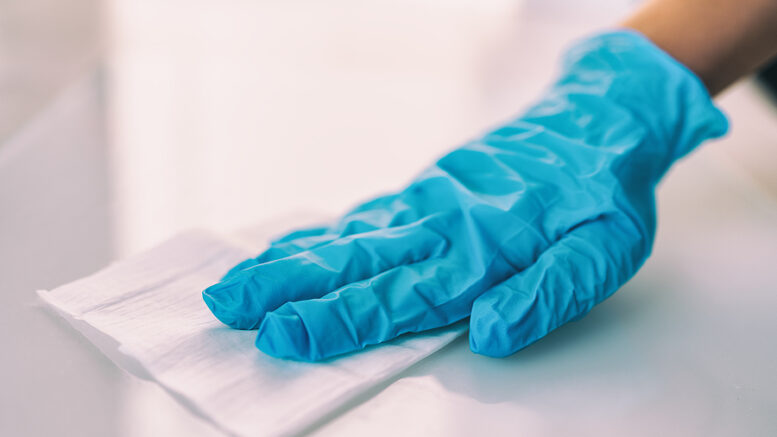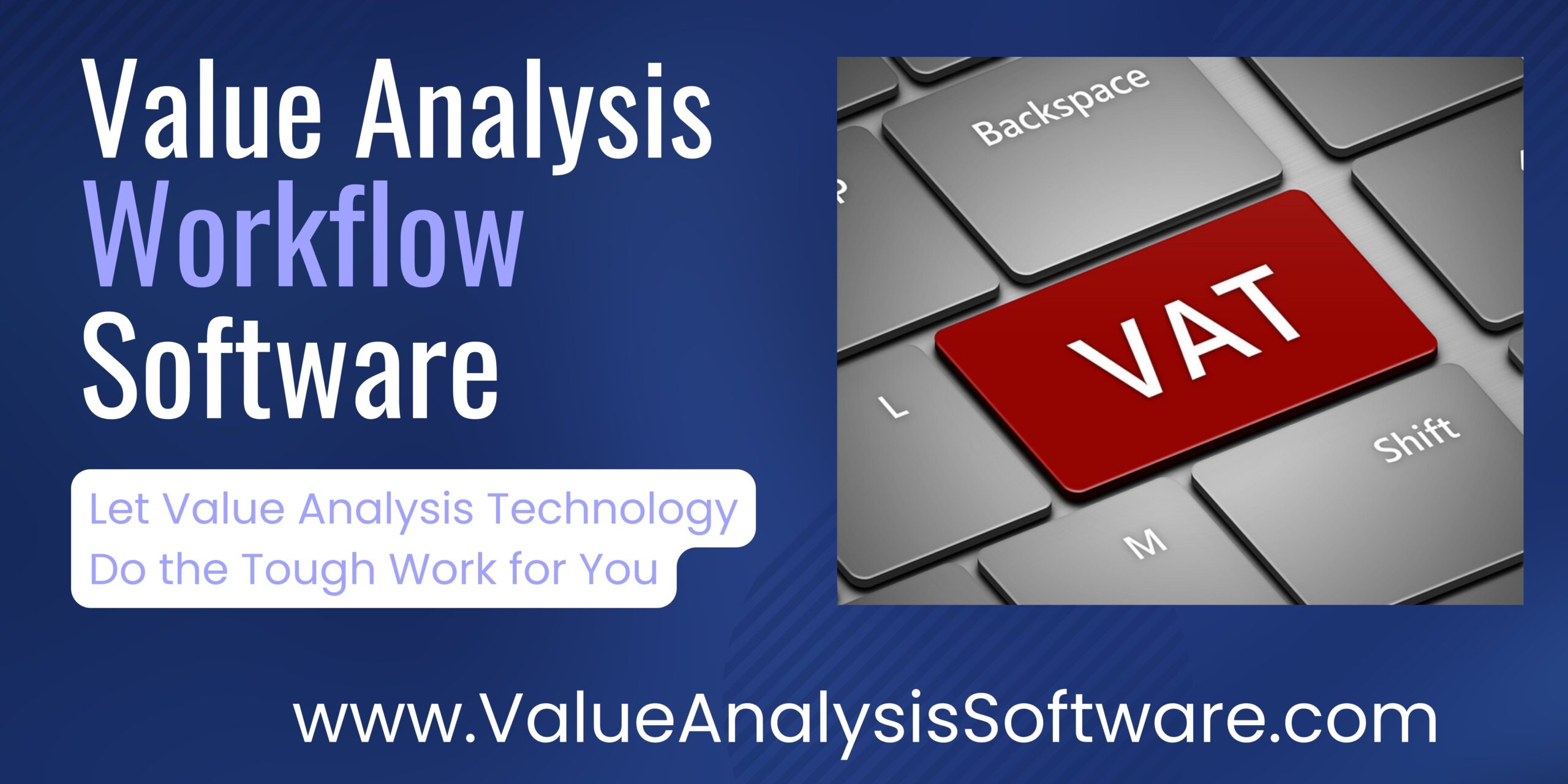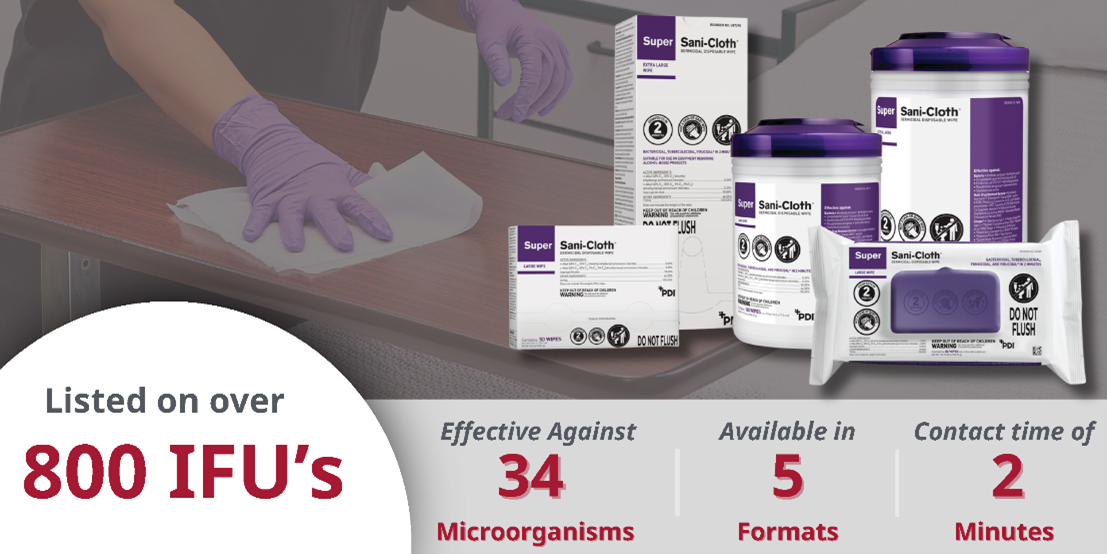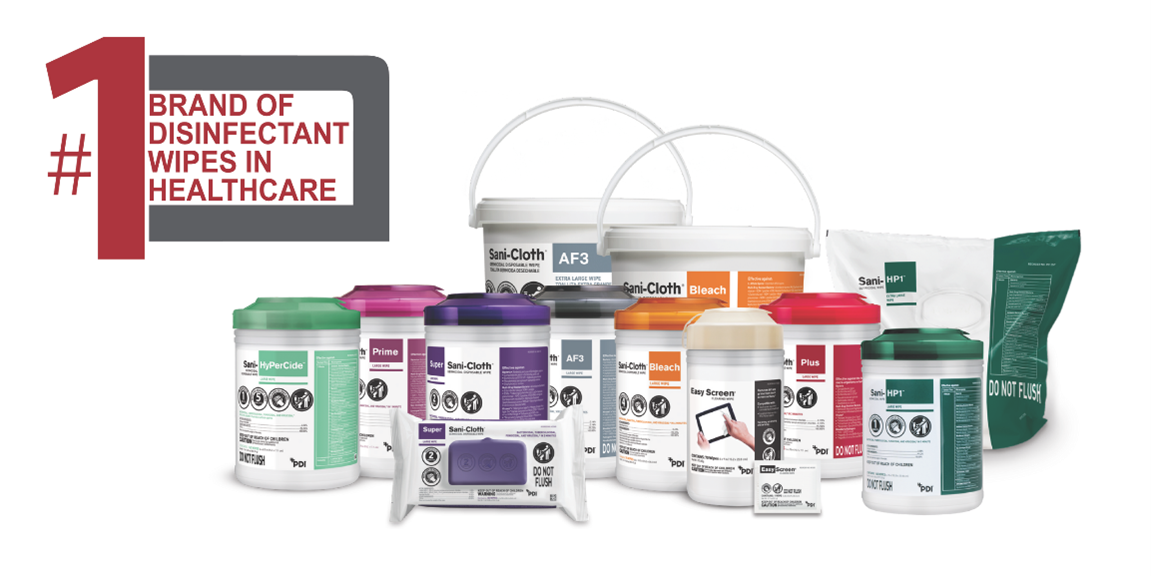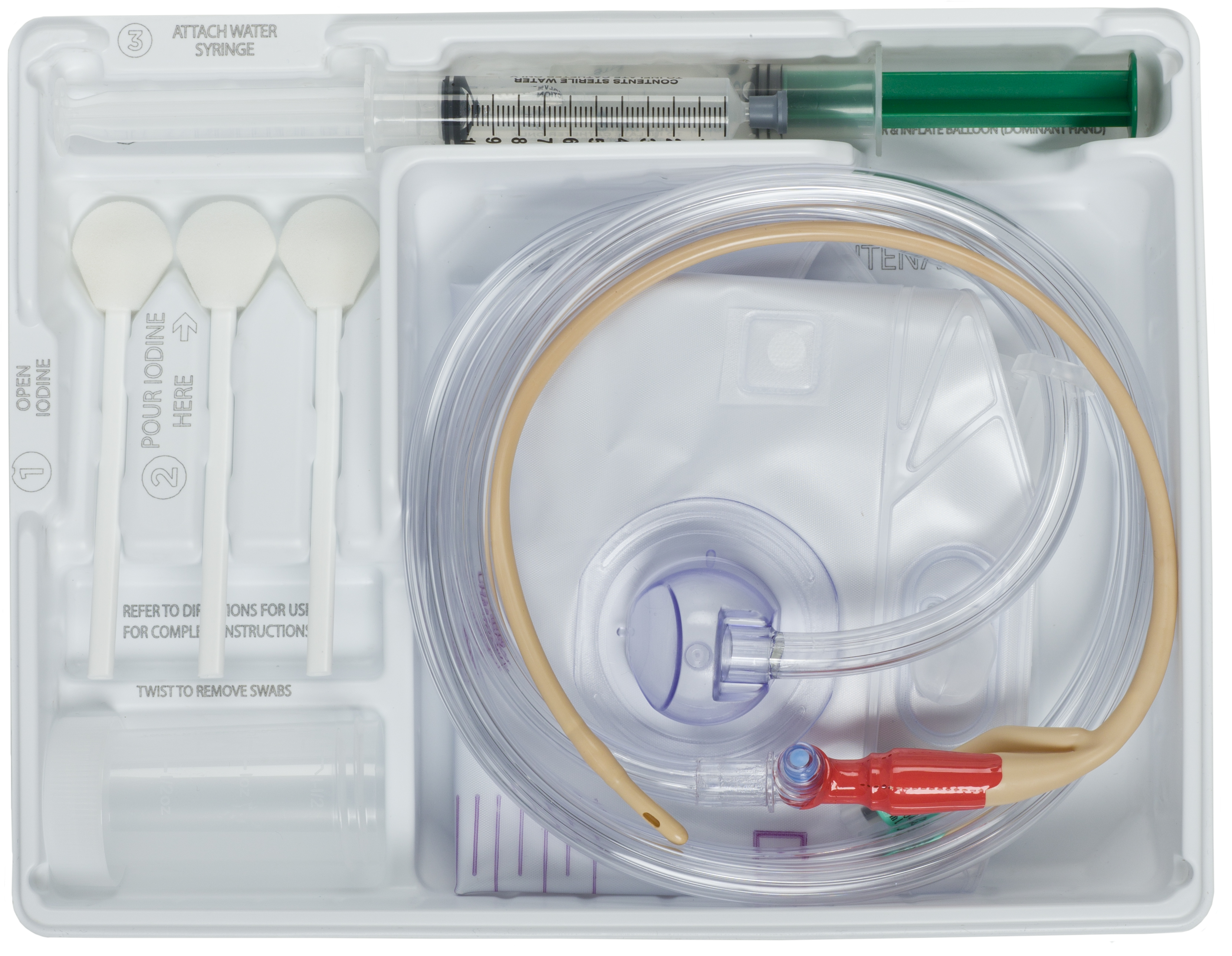Infection prevention is one of the most important responsibilities in healthcare today. From exam spaces and operating rooms to waiting areas, surface cleanliness plays a direct role in patient outcomes across the entire healthcare facility. Healthcare-associated infections (HAIs) affect an estimated 1 in 31 hospital patients in the U.S. on any given day, according to the CDC, leading to tens of thousands of deaths annually and costing the healthcare system billions of dollars each year. In this high-stakes environment, disinfectant wipes are a frontline tool in reducing the spread of pathogens.
Healthcare teams are constantly challenged to do more with less, but when it comes to infection prevention, cost-cutting can carry serious consequences. While the pressure to manage budgets is real, choosing the cheapest disinfectant wipe comes with hidden costs — ones that can compromise patient safety, disrupt operations, and lead to greater expenses down the line.
Organizations like PDI have long focused on addressing these challenges by developing disinfectant products that are effective, consistent, and designed with real-world healthcare environments in mind. PDI’s Sani-Cloth® line, widely used across U.S. hospitals, reflects an emphasis on product quality, equipment compatibility, and ongoing support — key factors in helping facilities balance safety, compliance, and operational efficiency. In addition, PDI can partner with healthcare organizations to offer discounts and purchase programs, providing further opportunities for cost savings while maintaining high standards of infection prevention.
Upfront Savings vs. Long-Term Impact
The initial cost savings from lower-priced disinfectant wipes can quickly be erased by increased waste and labor. Many generic (and often lower quality) wipes are poorly saturated, meaning that staff often need to use multiple wipes per cleaning task to achieve the desired level of disinfection. In some cases, residue left behind from subpar formulas requires additional wiping or even rinsing, adding unnecessary time and labor to already stretched workflows.
Product quality inconsistency is another concern. Wipes produced through fragmented third-party manufacturing networks may vary significantly from batch to batch. That lack of reliability increases the risk of ineffective disinfection, undermining infection control protocols, and putting patients and staff at greater risk of exposure to harmful pathogens.
Workflow Disruption and Operational Inefficiency
Disinfectant wipes that fail to perform consistently don’t just impact cleanliness — they affect the efficiency and effectiveness of a facility. When surfaces require multiple passes or leave streaks and residues, turnover times for patient rooms or procedural areas can be delayed. That slows down admissions, strains scheduling, and can increase costs.
Compounding the problem, inconsistent products often require retraining staff. When a product doesn’t behave as expected — due to variable saturation levels, unclear instructions, or inconsistencies in contact time — it causes confusion and errors. In a setting where time is precious and precision is essential, inconsistency and retraining can disrupt workflows and reduce staff productivity.
The Cost of Incompatibility
Not all disinfectant wipes are designed with material compatibility in mind. High-quality wipes are carefully formulated and tested to ensure they do not degrade the physical or mechanical properties of medical equipment and facility surfaces. Cheaper alternatives may contain harsh chemicals or may not be tested properly, leading to discoloration, corrosion, or weakening of finishes after repeated use.
This kind of damage shortens the lifespan of expensive equipment and furniture — from bed rails to imaging equipment — and can require costly repairs or replacements. Moreover, using wipes that are not listed on a device’s instructions for use (IFUs) can void manufacturer warranties, leaving facilities to shoulder the cost of damage themselves.
Recognizing the critical importance of equipment longevity, PDI works from the ground up to ensure its wipes are effective and reliable. Through ongoing collaboration with device and material manufacturers, PDI ensures its wipes are developed with equipment safety in mind. Super Sani-Cloth®, the leading disinfectant wipe in healthcare1, is listed on over 800 equipment and device manufacturers’ instructions for use (IFUs), providing confidence that disinfection won’t compromise equipment integrity. By choosing PDI, healthcare facilities can reduce the risk of costly equipment damage and ensure long-term performance of their investments.
Regulatory and Compliance Risks
Beyond operational and equipment costs, there are significant regulatory implications tied to disinfectant wipe selection. Some lower-cost wipes and lower quality wipes lack broad-spectrum efficacy and are not included on the EPA-registered product lists recommended by CDC, OSHA, and other regulatory and compliance agencies. Improper or inconsistent disinfection increases the likelihood of failed audits and, more importantly, can lead to unsafe environments for both patients and staff.
Choosing a disinfectant wipe with proven efficacy and compliance backing is not just about best practices — it’s a matter of institutional risk management.
What to Look for in a Disinfectant Wipe
When evaluating disinfectant wipes, healthcare leaders should focus on these essential attributes:
- Broad-Spectrum Efficacy: Wipes should be effective against a wide range of bacteria, viruses, and emerging pathogens, with appropriate contact times that align with clinical needs.
- Material Compatibility: Look for products tested for compatibility across common healthcare surfaces and medical equipment to prevent long-term degradation.
- Consistency: A standardized, high-quality, EPA-registered wipe used throughout the facility performs reliably, ensuring confidence in every use.
- Ease of Use: Ready-to-use formats, low-residue formulas, and ergonomic packaging improve staff compliance and satisfaction.
- Turnover Efficiency: Fast-acting disinfectants help reduce room downtime, improving overall workflow and throughput.
The Long-Term Value of Choosing a Trusted Product
Investing in a trusted, higher-quality, ready-to-use disinfectant wipe delivers value that extends well beyond upfront costs. These products consistently offer reliable performance, with uniform saturation and proven efficacy in every wipe — minimizing the need for reapplication and ensuring dependable results. Over time, the operational advantages add up: Fewer wipes are needed per task, labor efficiency improves, and the risk of equipment damage declines — leading to meaningful cost savings. Additionally, trusted products often come from manufacturers that actively invest in innovation, enhancing safety, surface compatibility, and disinfection performance to meet the evolving needs of healthcare environments.
The Value Beyond the Wipe
Choosing a high-quality wipe is only part of the equation. PDI, home to the #1 brand of disinfectant wipes in healthcare, Sani-Cloth®, goes beyond product manufacturing to support healthcare teams with comprehensive infection prevention solutions. As a full-service infection control partner, PDI provides clinical resources, education, and training to ensure proper use and maximize the impact of its products. Tools like the Sani-TAG® system and customized brackets help simplify compliance and standardize disinfection protocols across teams.
From product innovation to clinical partnership, PDI is committed to helping facilities maintain compliance, improve patient safety, and reduce the risk of healthcare-associated infections.
Cost-Efficiency Starts with the Right Wipe
In healthcare, where patient safety, compliance, and operational efficiency intersect, the true cost of a disinfectant wipe goes far beyond its sticker price. Choosing a cheaper and lower quality option may seem like a simple way to manage budgets, but the hidden costs of inefficiency, equipment damage, and regulatory risk can far outweigh the initial savings.
Healthcare professionals must consider the full picture when evaluating disinfectant wipes: efficacy, reliability, ease of use, and long-term impact. A high-quality wipe is more than a cleaning tool — it’s a foundational part of a safer, smarter healthcare environment.
PDI offers a solution that goes beyond the wipe. With Super Sani-Cloth® and other industry-trusted products, we provide more than just effective disinfection — we deliver a complete approach to infection prevention. PDI supports healthcare facilities with compatibility resources, clinical training, and compliance tools that improve outcomes and streamline operations. By choosing PDI’s well-engineered products, backed by expert guidance, healthcare facilities can not only enhance patient safety but also manage long-term costs more effectively. In addition, PDI can offer partners discounted purchase programs and other incentives resulting in cost savings.
To learn more about how PDI can support your infection prevention strategy, visit trustthemarketleader.com.
References:
1 Q4 2024 Clarivate data
Article by:
Ben Dolcimascolo, PDI Director of Marketing (Environment of Care)
Alice Brewer, MPH, CIC, CPHQ, FAPIC, PDI Senior Director of Clinical Affairs
Articles you may like:
Innovative Needle-Free Device Drives Evolution in Standard of Care for Inpatient Blood Draws
